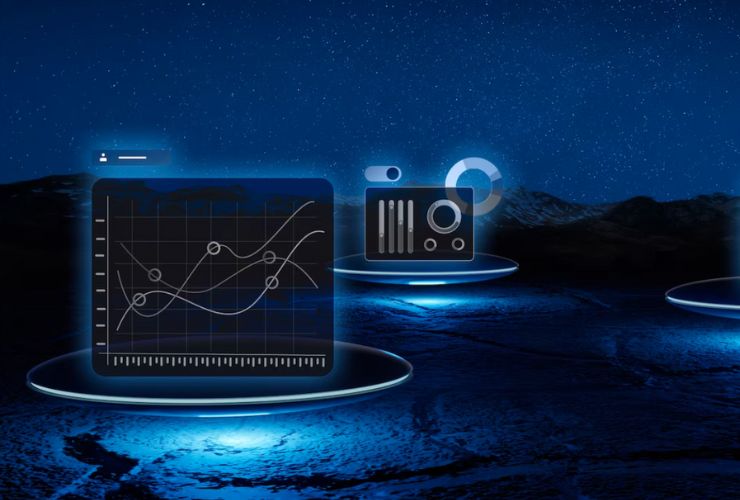In the digital world today, everything is moving at a fast pace, and applications are hugely reliant on databases for the storage, retrieval, and management of crucial data. Whether its eCommerce, SaaS app, or a resource management system, the performance of your database has a direct impact on your users experience, how fast the application runs, and the overall impact on your business.
As businesses are encountering larger and larger sets of data, optimizing performance has been a priority. More so, monitoring your databases is crucial to making sure they are healthy, optimized, secure, and responsive: allowing teams to identify issues sooner, maintain uptime, and maintain an optimal level of application performance to scale.
What is database monitoring?
Database monitoring is tracking and analyzing the performance, availability, and secure metric of a databases infrastructure in real time – at any point in the experience. It gives teams visibility into how a database behaves under load and thus, be able to demarcate performance thresholds.
Monitoring bases collect data from:
- Query execution time
- CPU and memory usage
- Disk I/O performance
- Connection counts
- Cache hit ratios
- Slow query logs
By taking all of that data and visualising in dashboards, and alerting systems to notify administrators, and dependant teams, teams can make better decisions that will detail the database environment, and keep it functioning at a good level of efficiency.
In simple terms, database monitoring acts as the nervous system of your data infrastructure — providing the insights needed to ensure continuous performance, scalability, and reliability.
The Importance of Database Monitoring
1. Guarantees High Performance
A well-performing database is critical to ensure smooth application operation. By monitoring the database ongoing, teams will be able to identify slow running queries, unoptimized indexing or locking issues to optimize performance.
If a database is an eCommerce site, and search was a slow running query, the sales conversion will be impacted. With performance monitoring teams can isolate inefficient queries or configurations — lowering time responses even during peak traffic.
2. Prevent Unplanned Downtime
Unexpected database outages will lead to loss of revenue, poor user experience and tarnished reputation. Monitoring tools offer real-time alerting to highlight the emerging issues like high CPU usage, slow disk I/O, or failed replication.
Acting on the alerts from a tool will allow the database administrator to prevent unexpected outages while lessening downtime and maintaining uptime.
3. Enhances Security and Compliance
Database monitoring is not only a performance monitoring function – it is relevant to the security and compliance to data requirements. Login attempts, changes in privileges, as well as unusual accesses can all be monitored to identify unauthorized access attempt or breached system.
This is critical for businesses that have sensitive data and are regulated under rules such as HIPAA, GDPR, and PCI DSS, in which continuous monitoring helps maintain data integrity and ensures compliance reporting.
4. Provides Resource Optimization
Monitoring offers insight on how databases consume resources – CPU, Memory, and Storage. This can be presented in a way that the teams can either,
- Change configurations to minimize unnecessary consumption,
- Reallocate resources around, or
- Optimize hardware or cloud consumption.
Ultimately the goal is to maximize the performance of your infrastructure and minimize operational costs.
5. Ensures Business Continuity
Modern organizations rely on databases for mission-critical operations. Therefore, databases need to be monitored to ensure that their backups, replication and failover system are operational.
In the case of hardware failing or an unsuitable environment cataclysmically impacting the environment, monitoring systems can ensure the ability to recover quickly or with minimum data loss, supporting continuity in operational services, even after unforeseen interruption.
Key Performance Indicators to Assess
In order to sustain healthy database environments, teams should routinely assess these key performance indicators:
- Query Performance: The length of time it takes to execute, slow queries, and query throughput
- CPU and Memory Usage: Prevent against overutilization and throttling
- Disk I/O and Storage: Ensure read/write efficiency and capacity plan
- Connection Count and Latency: Allows teams to see how many users or apps are actively connected and how quickly they are receiving responses
- Cache Hit Ratio: Measures how much caching data is improving performance
- Replication Lag: This is needed to provide assurance that the data is consistent across all replicas or clusters.
Modern Database Monitoring Tools
There are many tools that provide automation for visibility to database monitoring for data teams. Some popular choices are:
- Prometheus & Grafana: Open-source and excellent for living metrics and dashboards
- Datadog: Cloud-based APM that offers deep performance insights into the database and integrates everywhere
- SolarWinds Database Performance Analyzer (DPA): Enterprise scale design and advanced anomaly detection
- New Relic: Full-stack observability including database, error alerts, and tracking
- Percona Monitoring and Management (PMM): Support for open-source databases such as MySQL, MongoDB, and PostgreSQL
These systems will provide alerts, trends, and predictive analyses, for teams to continue improving database performance.
Best Practices for Monitoring Your Database Effectively
- Establish Baselines: Before identifying anomalies, you need to understand what normal performance looks like.
- Set Smart Alerts: Set alerts based on meaningful thresholds for each metric to avoid alert fatigue.
- Automate Reporting: Schedule reports that help you track trends and performance history.
- Integrate Within Your DevOps Pipelines: Monitoring can become part of the CI/CD pipeline, and it becomes easier to catch database issues early in development.
- Leverage Visualization Dashboards: Visualization dashboards can not only help you gain insights in real time, but they can also facilitate faster decision-making.
- Tune and Review Queries Regularly: Continuous query tuning and monitoring within development are crucial to sustaining a database’s health.
Conclusion
In a data-driven world, monitoring a database is not optional, it is a necessity. From performance and reliability, to compliance and cost-effectiveness, monitoring enables organizations to be proactive instead of reactive.
By investing in the right processesand monitoring tools, organizations can minimize downtime, improve user experience, and ensure that their databases — the foundation of modern applications — continue to timely and fullfill their customers’ and users’ needs, as they scale.









